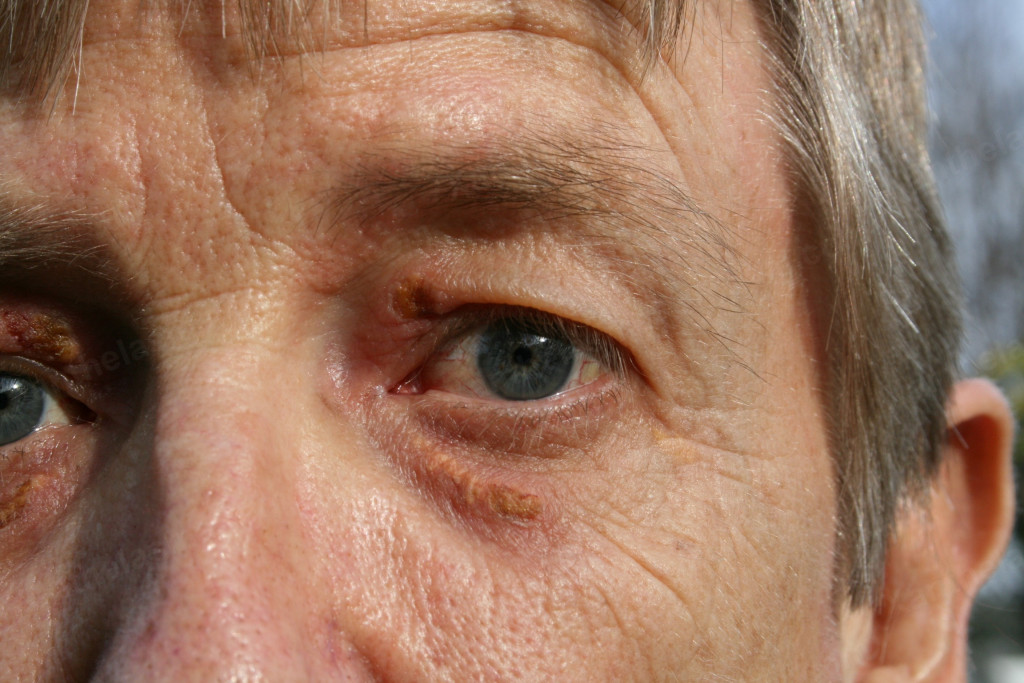What happens after the Xanthelasma is gone?
As it is well established now, properly formulated peels to suit each specific skin type and xanthelasma do not cause any scarring. Of course, this is because the ablation does not reach the deep parts of the dermis.
However, after the xanthelasma has been ablated, the new skin grows instead of the previous Xanthelasma. Initially the new skin will have a different texture and will not be pigmented as the rest of the surrounded skin. Sometimes this difference in skin texture and color is mistaken for a scar.

Why is that?
Now, do you remember when you had a superficial wound and it healed without major complications (ie infections)?
As it may have happened to you in the past, after a superficial wound healed and the scab fell off, the new skin looked very different from the rest. Additionally, you may have also noticed that the new skin which had formed at the time might have also looked slightly raised compared with the surrounding skin.At a certain point you would have forgotten about the wound altogether busy with your daily life commitments and a few months later you found that the area had blended in with the rest of the skin.
How does it work?
If the Xanthelasma had been ablated properly, the different skin texture will fade away over time. The difference in skin texture can last between two to six months, depending on the individual. The good news is that it is very easy to accelerate the blending process so that people will never notice that any treatment has ever been performed on the eyelid area.
The best solution is the use of mild peels followed by a lotion containing growth factor to accelerate the natural skin regeneration process. It is very important to select the right peel for the skin type on the eyelid area.
Of course, the type of peel to be used in order to accelerate the blending process is very different from the one used for the ablation of the Xanthelasma for its removal. Moreover, the eyelid area is more sensitive than the rest of the face, hence the peel should be milder than other peels used for skin rejuvenation.
It is well known that the function of beauty cosmetic peels is to mildly ablate the epidermis and stimulate the fibroblasts, in this way the natural regeneration kicks in. However, if regrowth is to be accelerated a hydrating cream with growth factor should be used soon after the old skin had been peeled off.
It is normally suggested to use hydrating cream because the immediate after effect of cosmetic peels are often dry skin. Also, sun protection should be worn during the skin regeneration period. This is because if the skin is exposed to the sun while regenerating, the ultraviolet rays are more likely to damage the DNA and therefore cause cell mutations. This is the main reason why following prolonged sun exposure after the use of cosmetic peels the likelihood of developing sunspots increases dramatically, hence defeating the whole point of using peels in the first place.
 Therefore after the Xanthelasma removal treatment, in order to accelerate the blending process of the new skin, grown soon after the Xanthelasma ablation, the following protocol can be carried out
Therefore after the Xanthelasma removal treatment, in order to accelerate the blending process of the new skin, grown soon after the Xanthelasma ablation, the following protocol can be carried out
- Apply the appropriate peel on the whole face. It is important that the patient start applying the custom peel starting from the eye area, and spread it over the rest of the face.
- After the old skin has completely peeled off apply sunscreen twice a day once in the morning and once after lunchtime. The application in the morning will protect the skin from occasional sun exposure throughout the morning. The application soon after lunchtime ( roughly 1.00 pm) will protect the skin from occasional sun exposure throughout the afternoon up to the evening.
- Apply a hydrating cream containing growth factor. The growth factor will stimulate and catalyze the natural regeneration process of the skin. This booster can be applied once in the evening so that the cell regeneration will occur during the night once sun exposure is not possible therefore minimizing the risks of sun damage
Read FAQ about Xanthelasma
if you are still confused about Xanthelasma and have questiones, Please check out out FAQ section
